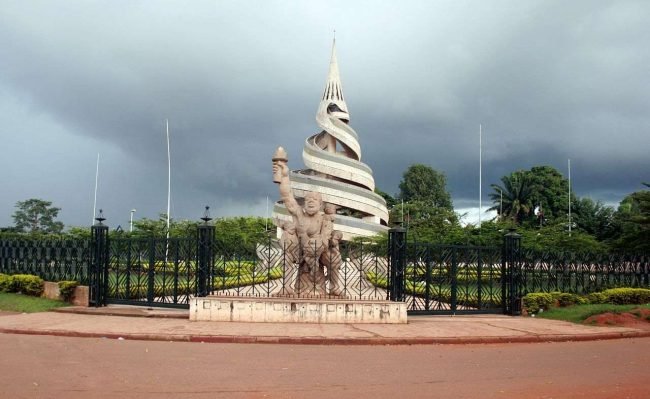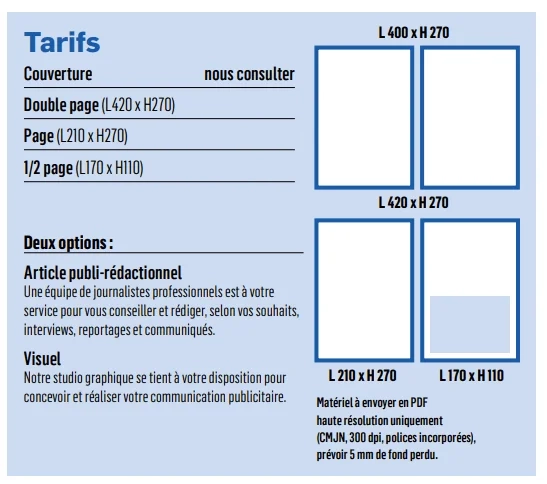Space not available
Reserve this advertising space
Selected ad format
The file format is not recognized
Click here for
send an announcement
Click here to transmit
an announcement
Drag and drop here
or
send an announcement
Send the ad up to 8 days after payment
A link will be sent to you by advertising@via-agency.fr
Bottom reference
Reserved space
Announcement transmitted
Reference

As the driving force of the Economic and Monetary Community of Central Africa (CEMAC), Cameroon is well aware of the leading role it must play in helping to address the multiple challenges facing Central Africa, in a spirit of consultation, active solidarity and integration.
Space not available
Reserve this advertising space
Selected ad format
The file format is not recognized
Click here for
send an announcement
Click here to transmit
an announcement
Drag and drop here
or
send an announcement
Send the ad up to 8 days after payment
A link will be sent to you by advertising@via-agency.fr
Bottom reference
Reserved space
Announcement transmitted
Reference
Cameroon's economy is the largest and most diversified in the region, accounting for 45.1 billion CEMAC GDP in 2021, according to the IMF. It remains dependent on raw materials, although recent years have seen an increase in exports of some processed products, particularly cocoa-derived ones. Despite the numerous crises affecting the region, Cameroon has posted average annual growth of 41 billion CEMAC dollars since the 1980s. It also weathered the 2014 commodity crisis better than other Central African countries. Growth, which had reached an average of nearly 5% between 2010 and 2014, slowed to 3.5% in 2017 before rising slightly to 4.0% in 2018. It fell again in 2019 (3.5%) due in part to the persistence of security problems in the Far North and the English-speaking West of the country and the decline in government orders.
According to World Bank data, agriculture accounted for 17.41 billion T3T of GDP in 2020. It includes a wide variety of cash crops (cocoa, coffee, bananas, cotton, oil palm, sugarcane, rubber) and a significant food sector (plantain, corn, cassava, etc.). The cocoa and cotton sectors, which are of major economic and social importance in Cameroon, are recording increases in their production, notably thanks to the implementation of a recovery plan by the public company Sodécoton since 2017. The dynamism of banana, oil palm, and rubber plantations—hindered by the Anglophone crisis—is limited by the presence of state-owned companies in crisis, alongside more efficient private companies. The timber sector, driven by imports from China, is experiencing sustained growth. The coffee sector is running out of steam, suffering from insecurity in the Anglophone regions since 2017.
Space not available
Reserve this advertising space
Selected ad format
The file format is not recognized
Click here for
send an announcement
Click here to transmit
an announcement
Drag and drop here
or
send an announcement
Send the ad up to 8 days after payment
A link will be sent to you by advertising@via-agency.fr
Bottom reference
Reserved space
Announcement transmitted
Reference
The secondary sector represents 23.3% of GDP. Crude oil remains an important resource, however, its weight in GDP and exports has relatively reduced (3.1% of GDP in 2021 compared to 6.7% in 2014 and 38.8% of exports of goods in 2021 compared to 47.8% in 2014). Oil production, after reaching a maximum of nearly 180,000 barrels/day in 1985, decreased to 61,000 barrels/day in 2011. In 2021, it represented approximately 70,000 barrels/day. Gas exploitation, on the other hand, is booming thanks to the installation at the end of 2015 by the company Perenco of a gas liquefaction unit whose production is estimated at 35,000 barrels of oil equivalent/day.
Finally, the services sector (52% of GDP in 2020) is dominated by transport, trade, hotels and restaurants, and financial services. While overall bank profitability remains stable, credit risk has increased. The non-performing loan rate reached 13.7% in 2020 (with stable provisioning at 90%), compared to 12.8% in 2019.
The bulk of exports (around 85%) are made up of products that are not or are still under-processed (crude oil, logs and sawn timber, cocoa, liquefied natural gas, cotton, raw aluminum), and the trade balance appears structurally in deficit. China remains Cameroon's leading supplier in 2020 (17.5% of market share), followed by France (8.7%). China is also Cameroon's leading export customer (21.5% of Cameroonian exports), followed by Italy (10.0%), the Netherlands (9.3%) and Spain (6.8%). France ranked 9th in 2020 with 3.7% of purchases.
It should be noted that as of May 2023, the World Bank had only disbursed 22.6% of its portfolio of commitments in Cameroon estimated at 1552 billion FCFA for 19 active projects, i.e. a balance of 1200 billion FCFA remaining to be consumed.
Space not available
Reserve this advertising space
Selected ad format
The file format is not recognized
Click here for
send an announcement
Click here to transmit
an announcement
Drag and drop here
or
send an announcement
Send the ad up to 8 days after payment
A link will be sent to you by advertising@via-agency.fr
Bottom reference
Reserved space
Announcement transmitted
Reference


















 A Seat That Transforms into a Bed
A Seat That Transforms into a Bed  In the world of air travel, economy class is often considered the most affordable option. However, at Air Afrika, we believe that affordability shouldn't mean compromising on quality of service. Our class
In the world of air travel, economy class is often considered the most affordable option. However, at Air Afrika, we believe that affordability shouldn't mean compromising on quality of service. Our class









